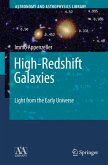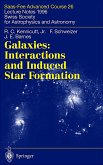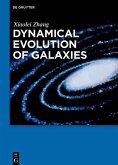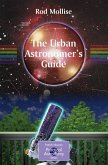Written for amateur astronomers, school and college science students and for those with a more general interest in science, Galaxies in Turmoil provides a readable, non-mathematical account of one of the hottest areas of astronomical research.
Observing details are given for 160 active galaxies, all of which are within the reach of amateur astronomers using small to medium-sized telescopes. There are tips on observing galaxies and active galaxies using binoculars and small to medium telescopes, along with a guide to imaging galaxies with CCD cameras.
Galaxies in Turmoil is equally suitable for practical amateur astronomers, or as a text for college courses including galaxies, active galaxies, quasars, deep-space objects and large-scale astronomy, up to the final year of an astrophysics, physics or science degree.
Research students - and even established research astronomers - will also find this book invaluable as a quick reference to the properties of, and phenomena within, those types of active galaxies that may be outside their specialisms.
Dieser Download kann aus rechtlichen Gründen nur mit Rechnungsadresse in A, B, BG, CY, CZ, D, DK, EW, E, FIN, F, GR, HR, H, IRL, I, LT, L, LR, M, NL, PL, P, R, S, SLO, SK ausgeliefert werden.
"Kitchin ... explores the physical conditions in the regions of the nuclei of galaxies. ... Kitchin enumerates the many types of active galaxies whose properties are revealed by observations at wavelengths ranging from X-rays through optical and infrared to the longest radio bands. ... this book contains a useful appendix that clarifies the relationship among the types of active galaxies and quasars. A lengthy table lists all the optically brightest examples. Summing Up: Highly recommended. General readers." (D. E. Hogg, CHOICE, Vol. 45 (5), January, 2008)
"The text is written at a level appropriate for undergraduate students, and its intended audience also includes amateur astronomers. ... Overall, the text is direct. A few stories of key episodes in understanding galaxies reveal the path of scientific discovery. ... The topics covered are of interest to students, and to the best of my knowledge, no other book provides a similar focus at a comparable level. ... Galaxies in Turmoil would make an excellent introduction for beginning research students." (Nancy A. Levenson, Physics Today, June, 2008)
"This text, written for college students, discusses current theory on active galaxies and supermassive black holes. ... aimed more at amateur astronomers and provides tips on how to observe active galaxies using small optical telescopes." (Contemporary Physics, Vol. 50 (2), March-April, 2009)









